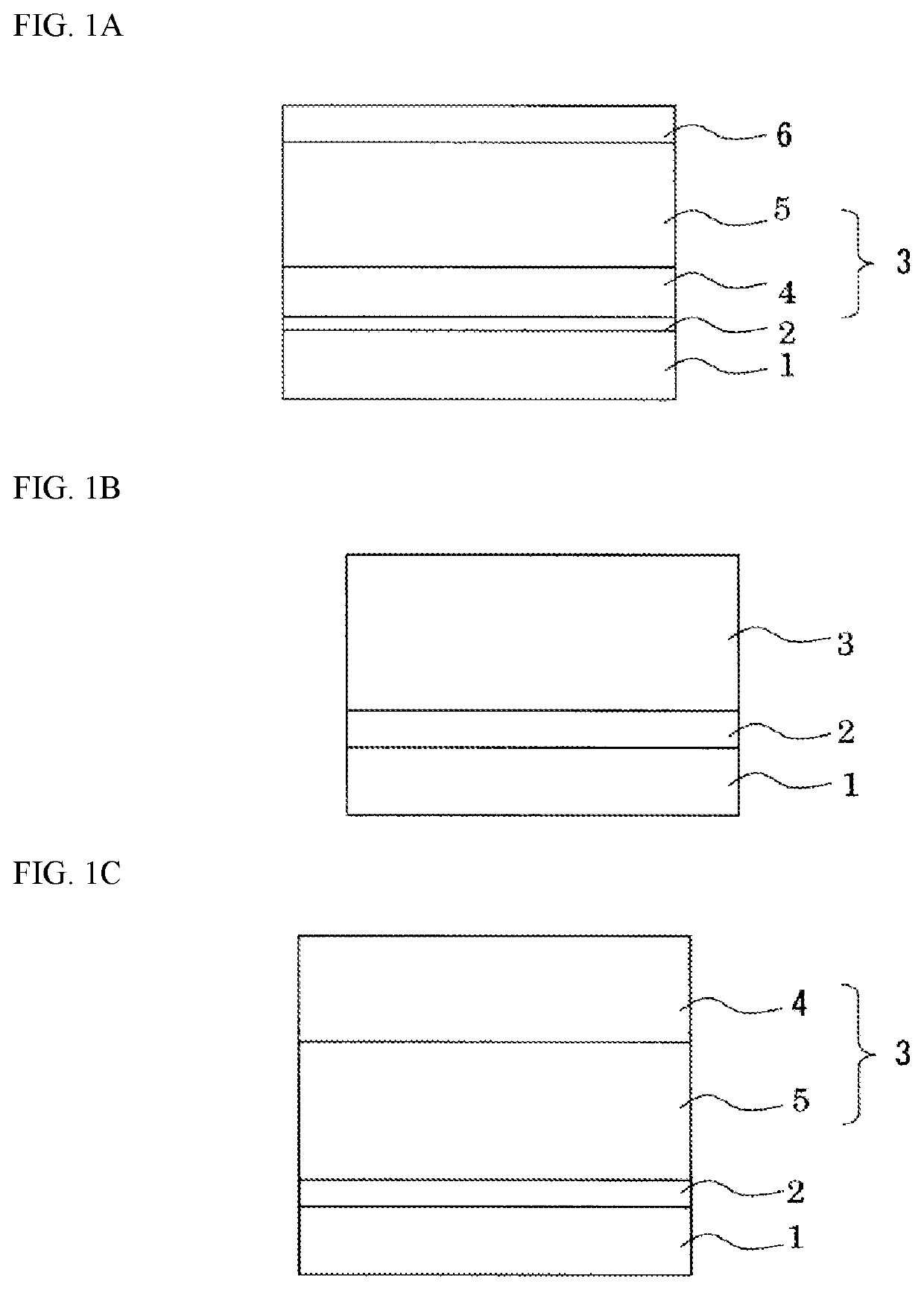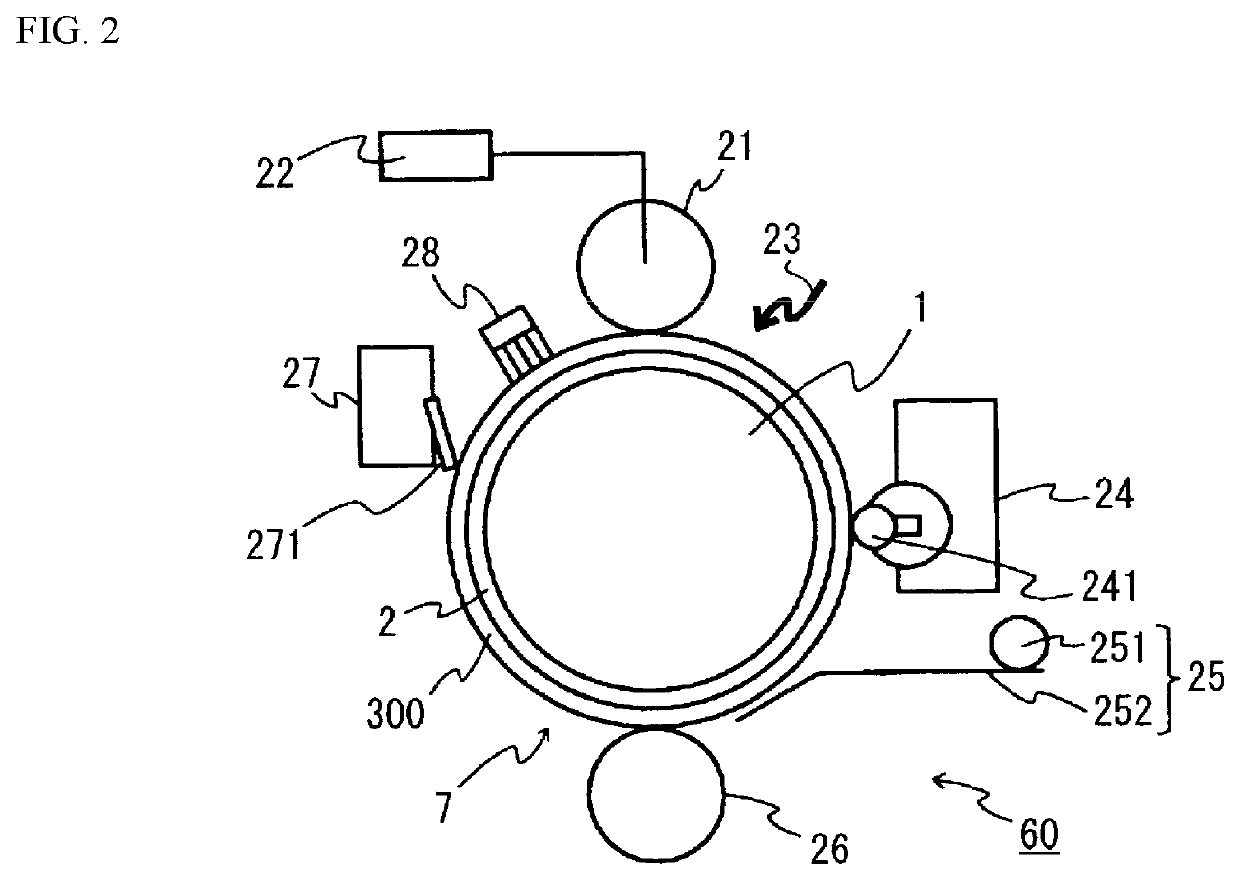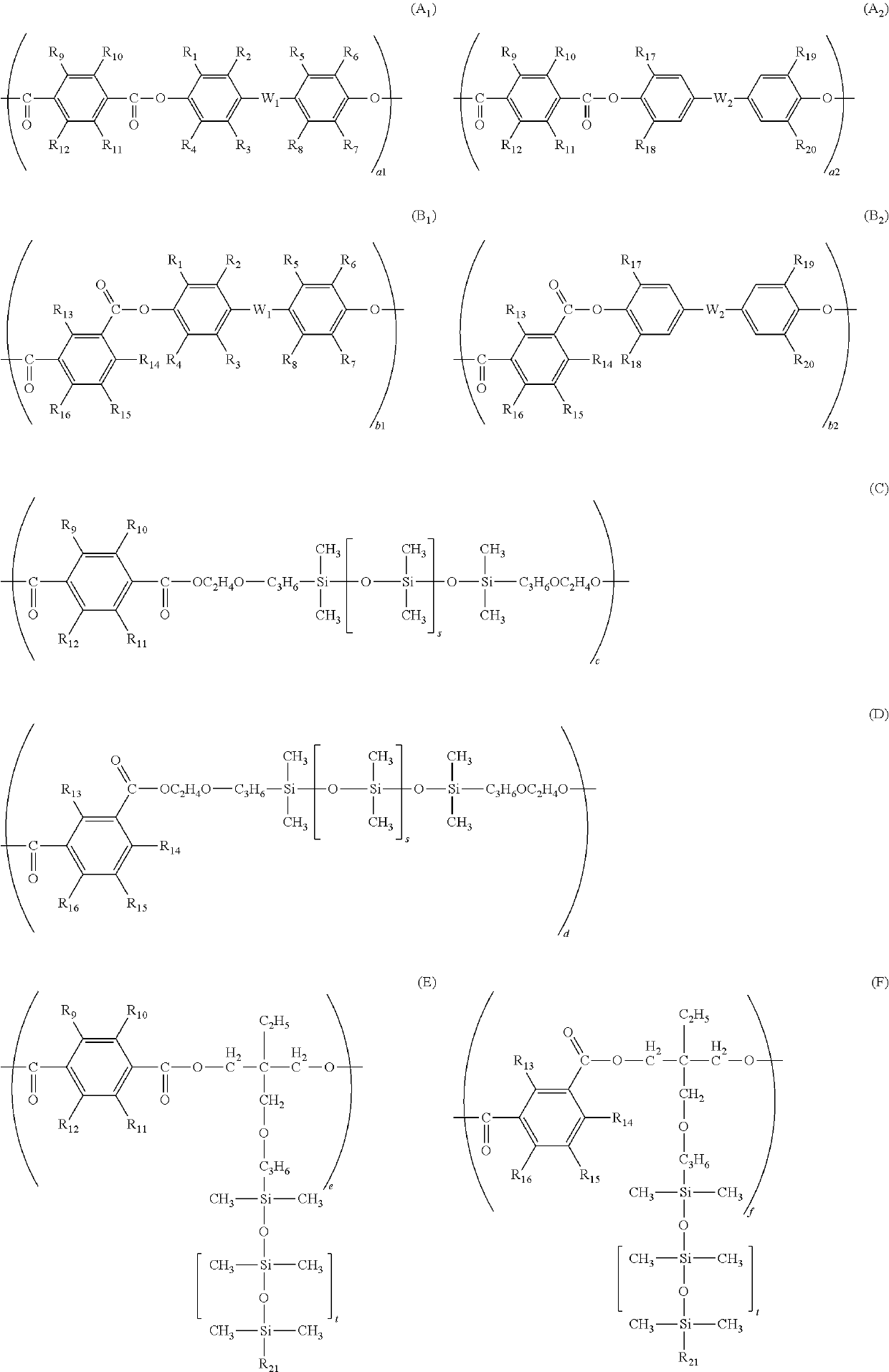Photoreceptor for electrophotography, method for manufacturing the same, and electrophotographic device
a photoreceptor and electrophotography technology, applied in the field of photoreceptors, can solve the problems of deterioration of image quality, inability to meet all the properties demanded for photoreceptors for electrophotography, and many advantages of organic materials, and achieves no light fatigue, low residual electric potential, and high sensitivity.
- Summary
- Abstract
- Description
- Claims
- Application Information
AI Technical Summary
Benefits of technology
Problems solved by technology
Method used
Image
Examples
example 1
[0112]Five parts by mass of alcohol-soluble nylon (trade name “CM8000” manufactured by Toray Industries, Inc.) and 5 parts by mass of aminosilane-treated titanium oxide fine particles were dissolved and dispersed in 90 parts by mass of methanol to prepare a coating liquid 1. This coating liquid 1 was dip coated on the outer circumference of an aluminum cylinder having an outer diameter of 30 mm as the conductive substrate 1, and dried at a temperature of 100° C. for 30 minutes to form an undercoat layer 2 having a thickness of 3 μm.
[0113]One part by mass of Y-type titanyl phthalocyanine as an electric charge generating material and 1.5 parts by mass of polyvinyl butyral resin (trade name “5-LEC KS-1” manufactured by Sekisui Chemical Co., Ltd.) as a resin binder were dissolved and dispersed in 60 parts by mass of dichloromethane to prepare a coating liquid 2. This coating liquid 2 was dip coated on the undercoat layer 2 and dried at a temperature of 80° C. for 30 minutes to form a ch...
examples 2 to 32
[0116]Photoreceptors were prepared in the same manner as in Example 1 except that the polyarylate resin represented by the structural formula (I-1) used in Example 1 was replaced with polyarylate resins represented by structural formulae (I-2) to (I-32), respectively. The prepared photoreceptor was left to stand for 30 days in the same manner as in Example 1.
example 33
[0117]A photoreceptor was prepared in the same manner as in Example 1 except that the Y-type titanyl phthalocyanine used in Example 1 was replaced with α-type titanyl phthalocyanine. The prepared photoreceptor was left to stand for 30 days in the same manner as in Example 1.
PUM
| Property | Measurement | Unit |
|---|---|---|
| thickness | aaaaa | aaaaa |
| thickness | aaaaa | aaaaa |
| thickness | aaaaa | aaaaa |
Abstract
Description
Claims
Application Information
 Login to View More
Login to View More - R&D
- Intellectual Property
- Life Sciences
- Materials
- Tech Scout
- Unparalleled Data Quality
- Higher Quality Content
- 60% Fewer Hallucinations
Browse by: Latest US Patents, China's latest patents, Technical Efficacy Thesaurus, Application Domain, Technology Topic, Popular Technical Reports.
© 2025 PatSnap. All rights reserved.Legal|Privacy policy|Modern Slavery Act Transparency Statement|Sitemap|About US| Contact US: help@patsnap.com



